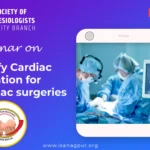
ACLS & BLS IN CANCER PATIENTS
Dr. Sarita Joglekar
Dying can be a peaceful event or a great agony when it is inappropriately sustained by life support” Roger Bone.
Cardiopulmonary resuscitation (CPR) in cancer patient with end stage disease is issue of significant clinical & ethical importance.
What is CPR?
Cardiopulmonary Resuscitation is a technique that is used to re-establish a person’s heart rhythm and breathing, shocking the heart back to normal beating it can involve the chest compression, rescue, breathing, and defibrillation. Medicine to stimulate the heart function, mask ventilation & intubation for mechanical breathing also known as life support.
IN CANCER
We can divide this patients broadly
- With the end stage disease / going for palliative care.
- Those with localized disease and good chance of survival.
I insist that end stage disease we should be careful and ethically should insist on supportive care as outcomes after resuscitation are not so encouraging. Even if the spontaneous circulation returns only small proportion survive to discharge.
But there is large group of young patients where the survival is good and disease is localized aggressive efforts to be made to good outcome after standard BLS & ACLS.
Dedicated Treatment & supportive care in cancer patient is nothing less than the final aggressive resuscitation, but still we can’t afford to leave the person off CPCR treatment if any adverse events happen.
What is the significance of valid DNR consents in cancer patient?
DNR consent is really ethical in some non-cancer diseases also but I think in cancer pts the legally valid DNR consent will be boon to end stage disease patients, where to do or not to do CPR is such a huge dilemma as treating physicians are also human and leaving someone without CPR goes against the human nature and the professional responsibility of a trained physician.
WHAT IS DNR?
Do not resuscitate or DNR is referred to as ‘no code’ is an advance directive document that guides the medical personnel to NOT perform the CPR or otherwise try to revive loved ones even if the heart is stopped.
DNR may be
Either full code – fully resuscitate
No code – no resuscitation at all
Some level in between – some support.
What is the Current scenario of DNR in India?
Do not resuscitate order is still not documented legal practice in India. It is a verbal communication between the treating doctor and the patient’s relative.
Here I have a say that the role of DNR consents legal validity will make a physician to rescue some CPCR in really final stage disease so that the unnecessary human trauma in their last stage of life can be avoided.
Different studies have indicated that role of receiving chemotherapy in pre- CPR have a poor outcome in survival & discharge & it is big question whether they are able to receive the chemotherapy later on survival?
Type of cancer like lung, liver & stomach have poor survival after the CPCR.
Similarly certain cancer types like lung adenocarcinoma with TKI sensitive EGFR (epidermal growth factor receptor) mutation or hormone receptor positive breast cancer may achieve the long –term survival after CPR events. Here i would like to quote the ISSCM guidelines.
Guidelines summary – ISSCM
- The physician has a moral and legal obligation to disclose to the capable patient/family, with honesty and clarity, the dismal prognostic status of the patient with justifications when further aggressive support appears non-beneficial. The physician is obliged to initiate open discussions around the imminence of death or intolerable disability, the benefits and burdens of treatment options and the appropriateness of allowing natural death.
- When the fully informed capable patient/family desires to consider the overall treatment goal of “comfort care only” option, the physician should explicitly communicate the standard modalities of limiting life-prolonging interventions.
- The physician must elicit and respect the choices of the patient expressed directly or through his family (surrogates) during family conferencing sessions and work towards shared decision-making. He would thus ensure respect to the patient’s autonomy in making an informed choice, while fulfilling his obligation of providing beneficent care.
- Pending consensus decisions or in the event of conflict with the family/patient, the physician must continue all existing life-supporting interventions. The physician however, is not morally or legally obliged to institute new therapies against his better clinical judgment in keeping with accepted standards of care.
- The case notes should clearly reflect, through faithful recording of the whole or gist of the proceedings of one or more of the family conferences, the decision-making process and the final decision based on medical appropriateness and patient’s preferences, in order to ensure transparency and accuracy.
- The overall responsibility for an end-of-life decision rests with the intensivist / attending physician of the patient, who must also ensure that a general agreement of other members of the caregiver team exists for the decision.
- If the capable patient/family consistently desires that life support be withdrawn, or that he/she be discharged home to die in situations in which the physician considers aggressive treatment non-beneficial, the treating team is ethically bound to consider withdrawal of the life support modality in question although clear legal guidelines are lacking at present.
A withdrawal or withholding decision should be implemented after completing a life support limitation form duly signed by the patient’s family and the treating team. The physician is obliged to provide compassionate and effective palliative care to the patient and to attend to the emotional needs of the family.I would like to think in above mentioned guidelines that CPR is definitely have a role in non DNR palliative pt., young patients with localised disease.

